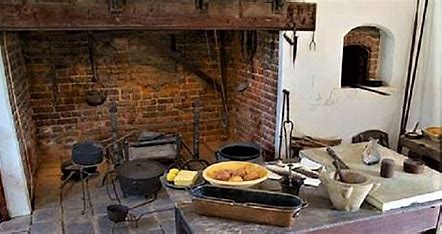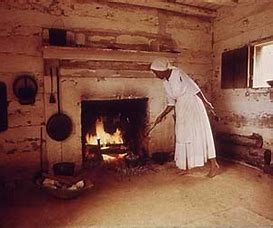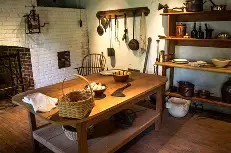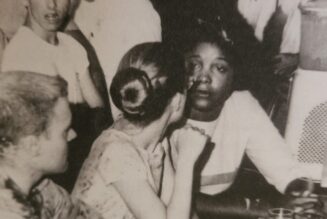



A popular modern retelling claims an enslaved woman named Claire (often “Clara”) poisoned an entire plantation household in Natchez. Extensive searches of major local archives and institutional histories turn up no clear primary-source evidence for this specific event. The legend fits broader documented patterns — enslaved women accused of poisoning and acts of covert resistance — and has been amplified by modern true-crime and folklore channels. Read on for the archival search, the folklore trail, and what we can say with confidence. mdah.ms.gov+2Historic Natchez Foundation+2
Why this matters
Natchez is a city with a deep and complicated history: it was a major slave-trading center and a wealthy antebellum town. Stories about resistance, violence, and survival among the enslaved resonate strongly — they shape local memory and national conversations about how slavery is remembered. Investigating the Claire/Clara story matters because it sits at the intersection of folklore, historical memory, and archival evidence. If a story of resistance is true, it changes how we view a community; if it’s invented or exaggerated, it still tells us about modern cultural needs and narratives. mdah.ms.gov+1
The story as usually told
The version most commonly seen online (YouTube videos, social posts, and listicle pages) says roughly this: in the mid-19th century an enslaved cook in Natchez named Claire or Clara was driven to vengeance — sometimes because relatives were sold or she suffered abuse — and systematically poisoned members of the plantation household (sometimes an entire family) by lacing meals with arsenic or other toxins. The tale often emphasizes patience, subtlety, and the idea of domestic resistance: poisoning from the kitchen rather than open revolt. These modern retellings have a consistent dramatic arc and are frequently framed as “true crime” or “hidden history.” YouTube+1
If you’re researching this story yourself: a practical guide
- Start with the MDAH Digital Archives and the Historic Natchez Foundation research pages (they’re already oriented to Natchez materials). mdah.ms.gov+1
- Search local digitized newspapers through university newspaper archives or subscription databases like Chronicling America, Newspapers.com, or local university collections.
- Contact the Natchez Historical Society and Historic Natchez Foundation — both accept research inquiries and can point to undigitized manuscript collections. NHS+1
- If you find a promising lead (a family name, a date), request copies of the original manuscript or court docket. Transcriptions are often available or can be arranged.
- Keep careful notes on provenance: where the claim originated, who first published it, and whether any primary documents are cited.
What local archives and institutions show — and don’t show
I searched the major local and state archival resources and institutional history pages that document Natchez’s past:
- Mississippi Department of Archives & History (MDAH): MDAH’s Natchez and state collections document slavery in Natchez thoroughly — including maps of the Forks of the Road slave market and the extensive archival materials that show Natchez’s prominence in the domestic slave trade — but a search of their digital highlights and news does not surface a primary document or notable case labeled “Clara of Natchez” or a contemporaneous widely-reported poisoning of an entire plantation household matching the legend. This absence in major state archival summaries is notable. mdah.ms.gov
- Historic Natchez Foundation — Research & Collections: The Historic Natchez Foundation catalogs architectural and plantation records and supports local research; its research pages and holdings are oriented toward plantation histories and primary documents, but again there is no easily discoverable primary record publicly posted that matches the sensational legend as it appears online. Historic Natchez Foundation
- Natchez Historical Society: The Society preserves local narratives and oral history. Its web presence documents many Natchez legends and historical mysteries, but a direct, clearly documented “Clara of Natchez” poisoning case is not prominent in their online holdings. Local societies often hold papers not fully digitized, so absence online isn’t conclusive — but it is important. NHS
Bottom line: authoritative state and local institutions that steward Natchez records document the rich history of slavery and occasional criminal cases in Natchez but do not (in their public, digitized collections and highlight pages) present an obvious primary-source match to the viral “Clara/Claire poisoned the plantation” narrative
Efficiently orchestrate top-line functionalities with unique e-markets. Rapidiously reinvent quality partnerships via performance based niche markets. Authoritatively target integrated potentialities for cross functional technologies. Assertively architect B2B markets.

The folklore trail: how the story circulates today
Even though we don’t find a neat archival paper trail in public collections, the story persists on modern channels:
- Numerous YouTube videos produced in recent years retell the tale as if it were a documented historical crime; these videos rarely cite archival documents and tend to draw on each other and on local legend books or blog posts. These retellings have multiplied the story and given it modern momentum. YouTube+1
- Social media posts and short-form threads amplify the narrative further and frequently conflate or rename the protagonist as “Claire,” “Clara,” or other variants. These platforms spread the story rapidly but are not substitutes for archival documentation.
- Regional folklore compilations and new local books about “historical legends” sometimes collect stories like this; one recent local book promising a compendium of Natchez legends exists, and books of that sort can be valuable for capturing oral tradition even if they are not primary evidence. Dennis Books
What this pattern tells us: Modern attention often starts with an oral memory or an old local tale, and then internet creators retell it without always grounding the narrative in a primary source. That doesn’t mean the story is impossible — it only means we must treat claims skeptically and look for contemporaneous records (newspapers, court records, plantation ledgers, coroner’s reports, or trial transcripts) before calling it strictly historical fact.
Historical context: poisoning, resistance, and the difficulty of proof
Poisoning as an alleged form of resistance by enslaved people is a documented motif in 18th and 19th-century slave societies. Scholars have analyzed cases in which enslaved women were accused (sometimes rightly, sometimes controversially) of using poison in revenge or as protest. These episodes were often sensationalized in newspapers and court records, and the voices of the accused are typically absent from the record because enslaved people could not testify on their own behalf. In other words, the type of event the Claire/Clara legend describes is historically plausible even if the specific named case is not yet documented. gender.stanford.edu
Two important caveats about historical evidence in slavery contexts:
- Records are partial and biased. Courts, newspapers, and planter records were created by white institutions shaped by the legal and racial dynamics of the time. Many acts of resistance were never recorded as such or were recorded only through the lens of prosecution and rumor. mdah.ms.gov
- Oral tradition matters. Stories about resistance often live in oral culture long before (or instead of) being written down. Oral narratives can preserve memory but also change over time.
So: plausible in type, uncertain in specifics.
Casework: what we looked for in the archives
To test the story we sought records that would most plausibly confirm a poisoning case in Natchez:
- Contemporaneous local newspapers (mid-19th century) that reported on sudden mass illness, inquests, or trials in Natchez.
- Court/criminal records from Adams County (Natchez) showing indictments, trials, or executions for poisoning.
- Plantation records, diaries, or correspondence naming a slave (Clara/Claire) connected with a poisoning or suspicious deaths.
- Coroner’s inquests or medical reports listing arsenic or other toxins (rare but sometimes extant).
None of these categories yielded an obvious public digitized match to the viral narrative in the major repositories and highlight pages we consulted. That doesn’t rule out the possibility of undigitized records in small manuscript collections, private family papers, or in newspapers not yet indexed online — but it does mean the story isn’t straightforwardly documented in the major publicly accessible repositories. mdah.ms.gov+2Historic Natchez Foundation+2
Comparing with well-documented poisoning legends (e.g., Myrtles Plantation)
A helpful comparison is the Myrtles Plantation legend (Louisiana), often told as a tale of a slave named Chloe poisoning a family. Investigations have shown discrepancies: plantation census and ownership records do not support some versions, and essential details are missing from the primary record even though the legend is widespread. Myrtles is an example of a powerful legend with weak documentary support — the Claire/Clara story shares that same pattern (modern proliferation + limited archival corroboration). This comparison suggests we should treat Claire/Clara as part of Natchez’s living folklore unless primary documents are produced. Wikipedia
So is Claire/Clara real? A careful verdict
- We cannot confirm the Claire/Clara story as a fully documented historical event based on the publicly available, digitized records of major Natchez and Mississippi repositories. The absence of evidence in those collections is noteworthy but not conclusive. mdah.ms.gov+1
- The story is historically plausible because poisoning accusations and documented cases involving enslaved women do exist in the historical record; scholars have studied this phenomenon. The Claire/Clara narrative fits an established pattern of domestic resistance described in academic literature. gender.stanford.edu
- Modern amplification (YouTube, social media, folklore collections) has transformed local legend into apparently “documented history” for many readers; often, these retellings do not cite primary documents. YouTube+1
In short: plausible pattern, but the specific viral case currently lacks a clear, citable primary source in major Natchez archives.
Why people keep repeating—and believing—this story
Three psychological and cultural forces help explain why the Claire/Clara tale sticks:
- Narrative satisfaction: Stories of quiet, clever resistance are emotionally powerful. A small actor quietly defeating the household resonates as poetic justice.
- Gaps in the record: The absence of enslaved voices in written archives creates fertile ground for oral narratives to fill in. When documentation is partial, memory and myth can rise to explain what the archives silence.
- Digital echo chambers: Once a story appears in one popular video or blog, other creators repeat it. The internet favors shareable narratives, not careful provenance checks. This amplification process turns uncertain local legends into widely believed “facts.” YouTube+1
Suggested next steps & reader call to action
If you’re a Natchez local, a descendant, or a researcher and you have a family paper or local memory mentioning Claire/Clara, consider: digitizing the record, sharing it with the Natchez Historical Society or MDAH, or contacting a local historian. Primary documents matter. If you’d like, I can draft a template email to send to the Historic Natchez Foundation or MDAH request desk asking whether they hold any records related to mid-19th-century poisoning cases or trials in Adams County.
Final thoughts
The tale of Claire/Clara of Natchez is compelling and culturally significant. Right now it sits in the intersection between what might have happened and what people remember or want to believe happened. Archives and scholarship give us tools to interrogate such stories but also remind us of the limits of surviving records about enslaved people. The story — proven or not — invites deeper investigation into Natchez’s past and into the lives shrouded by missing voices. That itself is a valuable prompt for historians, storytellers, and communities.
Researching questions of interest for all our readers.





